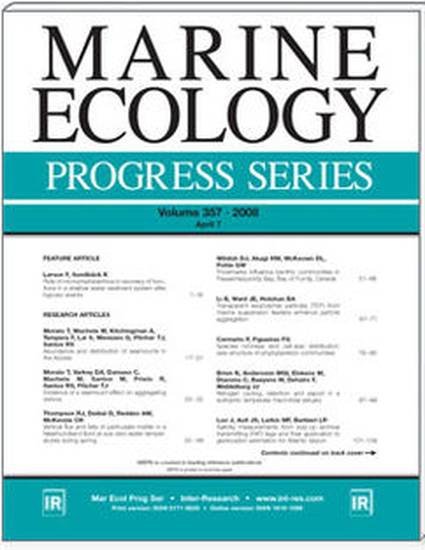
Article
Retrospective characterization of ontogenetic shifts in killer whale diets via δ 13 C and δ 15 N analysis of teeth
Marine Ecology Progress Series
(2009)
Abstract
Metabolically inert, accretionary structures such as the dentin growth layers in teeth provide a life history record of individual diet with near-annual resolution. We constructed ontogenetic δ13C and δ15N profiles by analyzing tooth dentin growth layers from 13 individual killer whales Orcinus orca collected in the eastern northeast Pacific Ocean between 1961 and 2003. The individuals sampled were 6 to 52 yr old, representing 2 ecotypes — resident and transient — collected across ~25° of latitude. The average isotopic values of transient individuals (n = 10) are consistent with a reliance on mammalian prey, while the average isotopic values of residents (n = 3) are consistent with piscivory. Regardless of ecotype, most individuals show a decrease in δ15N values of ~2.5‰ through the first 3 yr of life, roughly equivalent to a decrease of one trophic level. We interpret this as evidence of gradual weaning, after which, ontogenetic shifts in isotopic values are highly variable. A few individuals (n = 2) maintained relatively stable δ15N and δ13C values throughout the remainder of their lives, whereas δ15N values of most (n = 11) increased by ~1.5‰, suggestive of an ontogenetic increase in trophic level. Significant differences in mean δ13C and δ15N values among transients collected off California suggest that individuality in prey preferences may be prevalent within this ecotype. Our approach provides retrospective individual life history and dietary information that cannot be obtained through traditional field observations of free-ranging and elusive species such as killer whales, including unique historic ecological information that pre-dates modern studies. By providing insights into individual diet composition, stable isotope analysis of teeth and/or bones may be the only means of evaluating a number of hypothesized historical dietary shifts in killer whales of the northeast Pacific Ocean.
Keywords
- Orcinus orca,
- Stable isotopes,
- Weaning,
- Tooth annuli,
- Dietary specialization
Disciplines
Publication Date
January 13, 2009
DOI
10.3354/meps07747
Publisher Statement
Published by Inter-Research 2009
Citation Information
Seth D. Newsome, Michael A. Etnier, Daniel H. Monson and Marilyn L. Fogel. "Retrospective characterization of ontogenetic shifts in killer whale diets via δ 13 C and δ 15 N analysis of teeth" Marine Ecology Progress Series Vol. 374 (2009) p. 229 - 242 Available at: http://works.bepress.com/michael-etnier/14/
